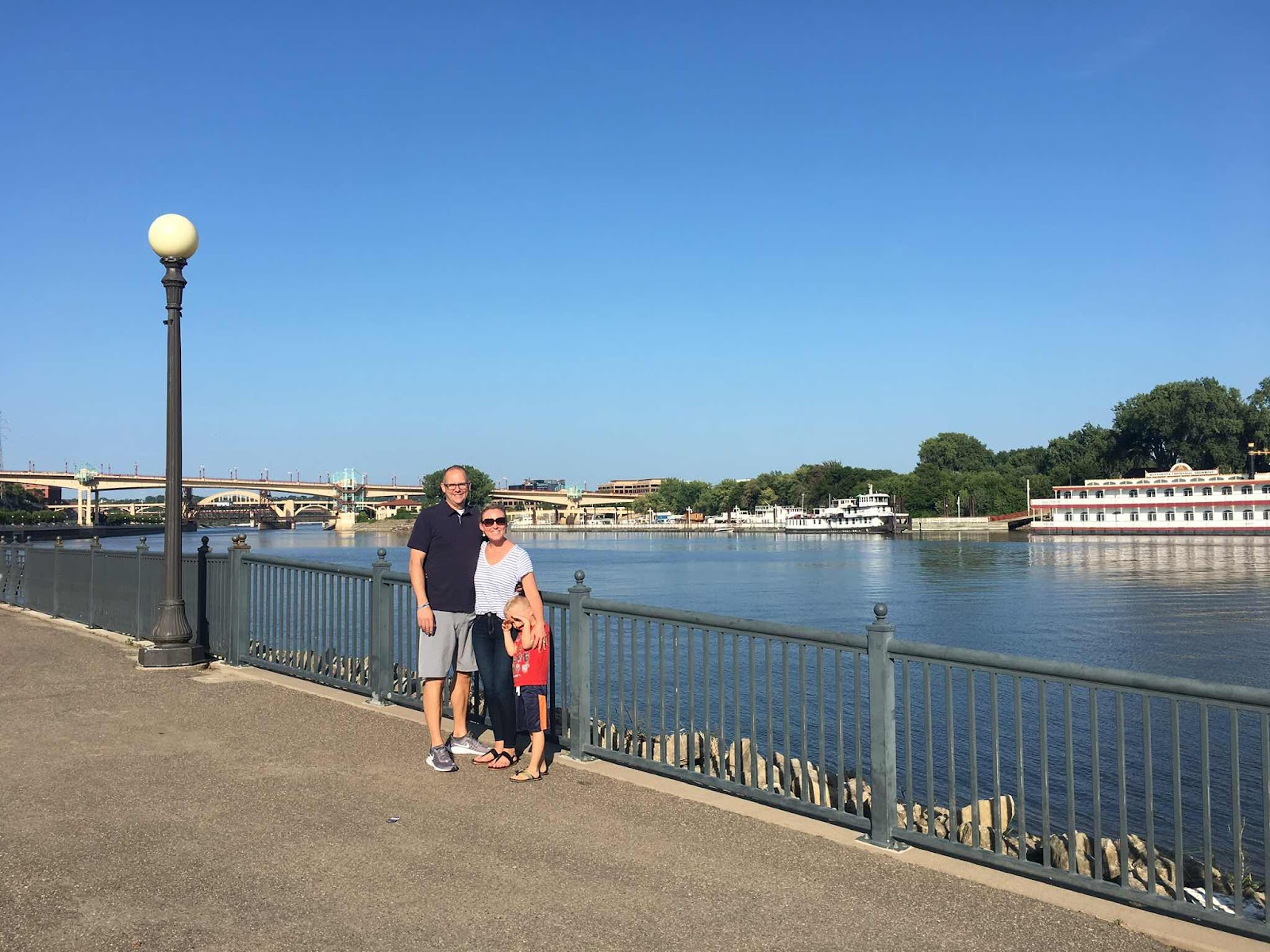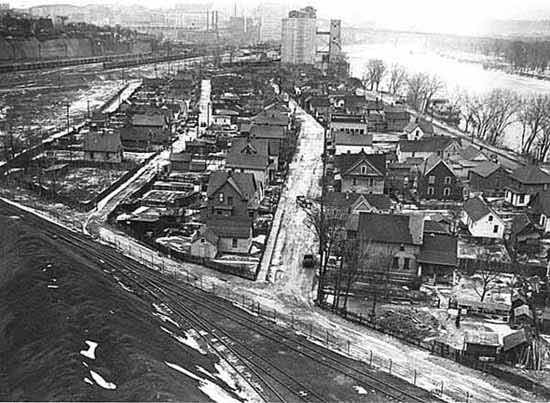On my recent trip to Minnesota we had a night out in St. Paul, the capital city. We parked along the Mississippi River near Upper Landing Park and walked along what is now a beautiful waterfront on a clean river on a gorgeous summer evening.
 Looking north, in the distance you can see several of the more than a dozen bridges of St. Paul, including the Wabasha Street Bridge which crosses Raspberry Island to Harriet Island. To the right are two paddlewheelers, the boats that have been plying the Mississippi since Mark Twain made them famous. The one on the right used to be a showboat with musical theater but hasn’t been in use for several years.
Looking north, in the distance you can see several of the more than a dozen bridges of St. Paul, including the Wabasha Street Bridge which crosses Raspberry Island to Harriet Island. To the right are two paddlewheelers, the boats that have been plying the Mississippi since Mark Twain made them famous. The one on the right used to be a showboat with musical theater but hasn’t been in use for several years.
 Looking south, a walking/biking path follows the river downstream in Upper Landing Park toward the old Municipal Grain Elevator ...
Looking south, a walking/biking path follows the river downstream in Upper Landing Park toward the old Municipal Grain Elevator ...
 ... and back upstream toward the city, past a flock of beautiful bird sculptures which represent the navigation and migration routes along the Mississippi, and ...
... and back upstream toward the city, past a flock of beautiful bird sculptures which represent the navigation and migration routes along the Mississippi, and ...
four fountains, including this one that Mason
quite enjoyed playing on. See the hammock napper in the background?
💧 💧 💧
Such a beautiful public green space now with people enjoying the lush lawns and scenic trails, but this glimpse of its place in history is far from glamorous.
The stretch of the river was once the busy center of shipping commerce and cargo docks for ore and lumber, and the undesirable areas of land alongside became settlements for the poorest of the poor. The area called Bohemian Flats consisted of shacks built of flotsam and jetsam from the river by male immigrants from Czechoslovakia and Germany. The recently arrived single men were a wild bunch and Bohemian flats was known as a lawless and filthy place, constantly mentioned in the newspapers for drunken fights and other debauchery. As their fortunes improved however, the men married, had families, and sought out better places to live in the city. By the 1880s their shacks were deserted and new immigrants from a small area in Italy began to move in.

Upper Landing/Little Italy 1950s I think
The men found hard work as laborers in the city, some for the railroads, and built their own homes. Little Italy, as it came to be called, suffered from serious problems including the lack of a sewer system and clean drinking water, the foul-smelling river water, and constant flooding of homes when the river rose in the spring.
The community remained until a devastating flood in 1952, which caused homes and school to be condemned. Families were relocated against their will, the buildings were razed, and a scrapyard was built on top. The riverfront remained a mess and an eyesore, contaminated with a hundred years of human and industrial waste. But in the late 1990s it was named a Superfund site and funds were available for a real cleanup.
Beginning in 2006, construction of attractive (and expensive!) high rise apartments and condos began. Developers kept the old street names and named new ones after some of the successful inhabitants who began their lives in America there in Bohemian Flats and Little Italy.